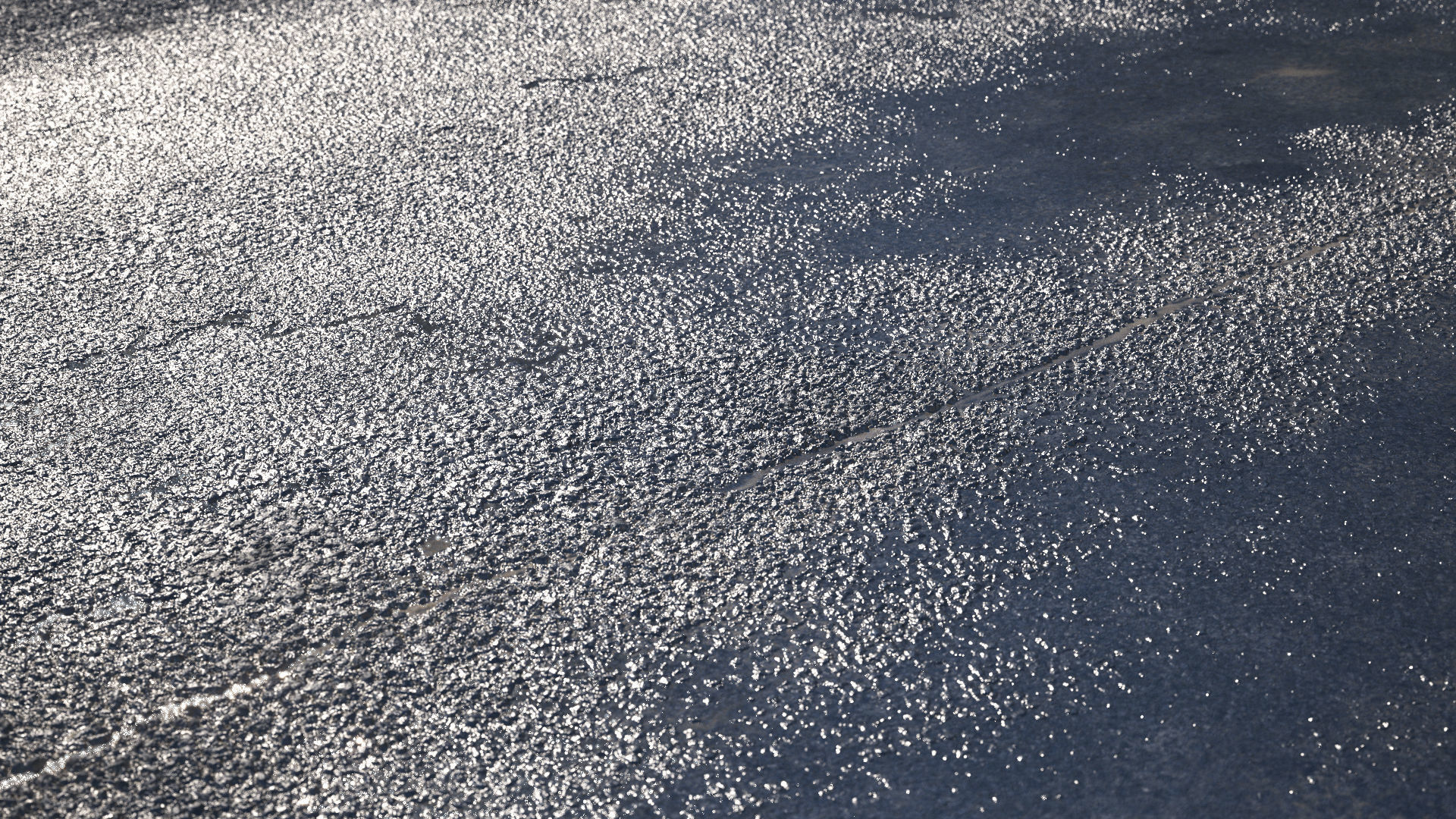Wet Road Texture
The wet road texture is an important element in the life of a driver. Just like any other element on the road, the wet texture of the road may lead to some consequences. The smooth feel of the road becomes slippery, thus leading to frictionless tires while driving, which in return affects driving control and may lead to accidents.
The Pain Points of Wet Road Texture
Drivers often face challenges on wet roads, which include reduced visibility, spray from other vehicles, and the risk of hydroplaning.
The Target of Wet Road Texture
The aim of the wet road texture is to reduce slippery surfaces and, in turn, prevent accidents on the road. These textures are essential to maintaining traction and providing good driving conditions when it is not dry. They reduce the amount of water on the surface of the road by creating a textured surface, which allows for better tire grip and improved control of the vehicle.
Main Points
Wet road texture reduces slippery surfaces and helps maintain traction while driving. It also provides better control of the vehicle, especially when the road is not dry. The target of these textures is to prevent accidents by creating a textured surface that reduces the amount of water on the road surface.
Personal Experience with Wet Road Texture
Driving in wet conditions can be nerve-racking, especially on a highway. On one occasion, while driving in rain, I found myself hydroplaning, skidding dangerously as I lost control of the car. It was only because of the wet road texture that my vehicle regained traction, and I was able to quickly bring it back under control. Without the texture, I could have been in serious trouble, and possibly an accident.
Vehicles and Wet Road Texture
Not all vehicles handle wet road textures the same way. Sports cars usually have large and wide wheels that can handle wet conditions well. But the opposite is true for smaller cars. They require more care and lower speeds, especially when on wet roads.

Types of Wet Road Textures
There are many types of wet road textures available. Porous asphalt, concrete, and asphalt-rubber are just a few examples of the available options. Porous asphalt has a stone-like appearance, which helps slow the sliding of the vehicle while driving in wet conditions. Concrete also has a coarse surface, which helps with traction. One more option is asphalt-rubber, which is known for reducing noise and controlling water buildup on the road surface. In the end, all of these textures help reduce sliding while driving in wet conditions.
Benefits of Wet Road Texture
The benefits of wet road texture include better driving control, which reduces the risk of accidents and injuries. They also reduce tire wear and tear, preventing premature tire replacement, and result in better fuel economy. In addition, the textures of the surface also create a smoother and more comfortable driving experience.
My Experience in Wet Road Conditions
Despite the fact that wet road conditions do make me nervous, when I am on the road, I always ensure that I keep my speed low and maintain a safe distance between other drivers. I also ensure that I am driving with good tires that are well-suited for wet conditions.

Question and Answer
Q1: Can driving on a wet road surface damage a car's brakes?
A1: No, driving on wet roads doesn't damage brake pads or rotors. Drivers should apply the brakes gently to avoid skidding and sliding, and to reduce the amount of water buildup on the pad surface.
Q2: Can a driver avoid hydroplaning on wet roads?
A2: Yes, drivers can avoid hydroplaning by slowing down and maintaining a safe distance to avoid sudden braking. It is also important to have a good set of tires specifically designed to handle wet conditions.
Q3: Does driving too fast cause the vehicle to aquaplane?
A3: Yes, excessive speed can cause a vehicle to aquaplane, which ultimately could lead to accidents. Drivers should slow down, especially in heavy rain, and maintain a safe distance between other vehicles.
Q4: What should drivers do when they experience hydroplaning?
A4: When a driver experiences hydroplaning, he/she should avoid sudden braking. The driver should gently lift his/her foot off the accelerator to allow the car to regain traction.
Conclusion of Wet Road Texture
Wet road texture is critical for maintaining traction and providing better control of vehicles when driving in wet conditions. A number of different surfaces, including porous asphalt, concrete, and asphalt-rubber, are available to choose from. In the end, wet road texture helps prevent accidents and reduces the chances of injury or damage to people or property.
Gallery
HIGH RESOLUTION TEXTURES: Asphalt Road Wet Texture 4770x3178

Photo Credit by: bing.com / asphalt texture road wet textures resolution high seamless
Seamless Wet Road Texture 0004 - Texturelib
Photo Credit by: bing.com / road texture seamless wet texturelib
Large Area Seamless Wet Road Texture Texture | CGTrader

Photo Credit by: bing.com / textures cgtrader
HIGH RESOLUTION TEXTURES: Asphalt Road Wet Texture 4770x3178

Photo Credit by: bing.com / asphalt texture seamless road wet textures resolution high
Free Images : Water, Sand, Snow, Road, Texture, Rain, Wet, Asphalt

Photo Credit by: bing.com / texture rain wet road water asphalt puddle material blacktop photography monochrome macro soil freezing transportation sand outdoors snow close natural